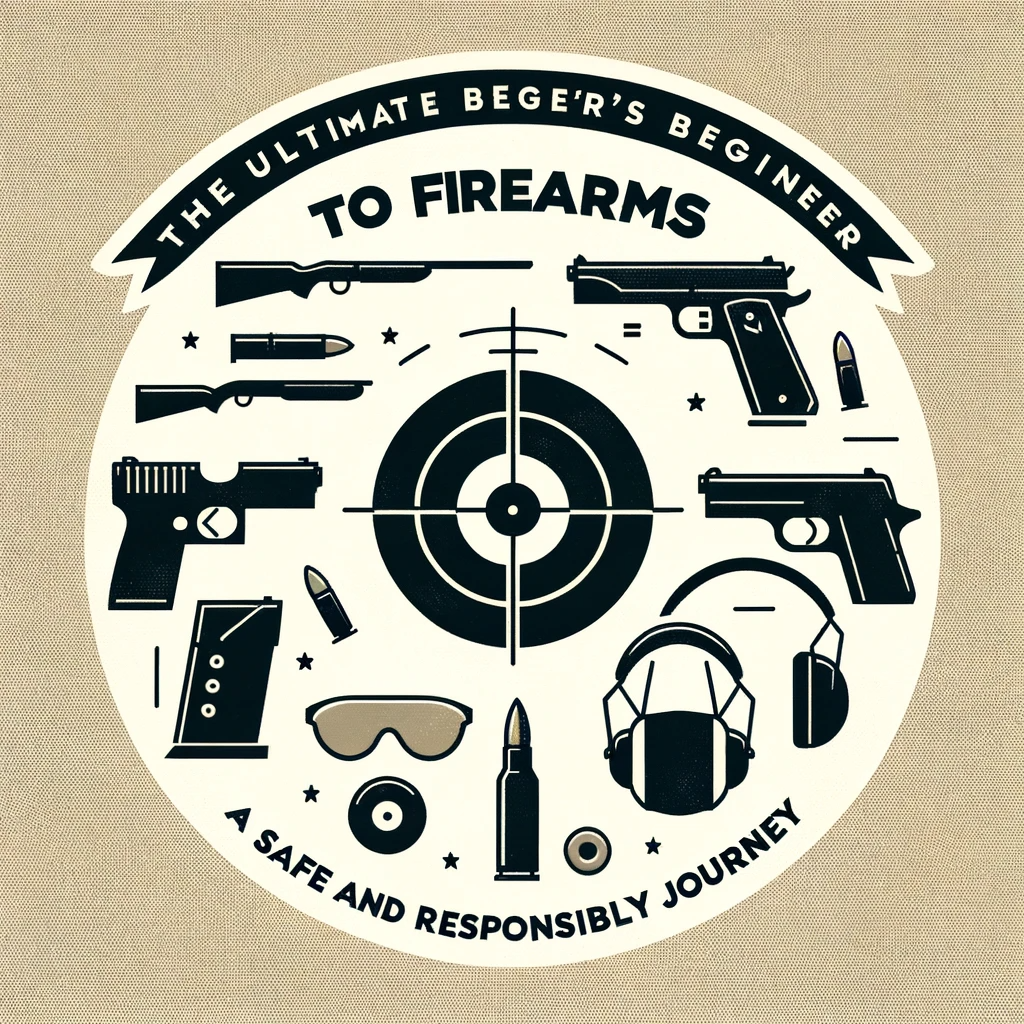Intro:
Embarking on the journey of firearms ownership is an exciting venture that comes with significant responsibility. This comprehensive guide is meticulously crafted to assist beginners in navigating the world of firearms with safety and knowledge as their foremost tools. From selecting the right firearm to understanding the nuances of gun safety, this guide covers essential information every aspiring gun owner should know.
The Importance of Firearm Safety:
The Cardinal Rules of Gun Safety
- Always treat every gun as if it’s loaded: This mindset ensures you always handle firearms with care.
- Never point a firearm at anything you don’t intend to shoot: This helps prevent accidents, especially in unexpected situations. Always point it in a safe direction.
- Keep your finger off the trigger until your sights are on target and you’re ready to fire: This rule is crucial for preventing unintended discharges.
- Be aware of your target and what is beyond it: Bullets can travel significant distances, so knowing what’s behind your target is vital.
Understanding Safe Storage and Transportation:
- Storage Solutions: Options range from trigger locks to biometric safes. It’s essential to store guns in a manner that prevents unauthorized access, especially by children. Every year there are children who shoot them selves, friend, or sibling. It is YOUR resposiblity to properly secure your firearm. It is best to keep them in a large safe that only you have access to.
- Transporting Firearms Legally: Familiarize yourself with local and federal laws regarding the transportation of firearms. This often includes using locked cases and separating ammunition from the firearm. Some states have rules about when you can have a firearm in the car. Sates like Maryland require that you be taking the firearm directly to/from a place of its intended use such as hunting or firing range. Some places also different rules depending on what certifcations you have or what profession you work in like an armed guard or a concealed carry permit.
Selecting Your First Firearm:
Exploring Different Types of Firearms:
- Handguns: Best for personal defense and beginners. Models like the Glock 17 offer reliability and ease of use.
- Rifles: From hunting to sport shooting, rifles like the AR-15 are popular due to their versatility.
- Shotguns: Good for home defense and hunting. The Remington 870 is a classic choice for its reliability.
Caliber and Ammunition:
- Handgun Calibers: Beyond the 9mm, calibers like .380 ACP and .45 ACP are also popular.
- Rifle Calibers: For beginners, .22LR is recommended, but for hunting, calibers like .308 or .30-06 might be more appropriate.
- Shotgun Shells: Understanding the difference between birdshot, buckshot, and slugs is crucial for shotgun users. Birdshot is an ammunition that contains multiple small metal pellets this makes it useful for hunting fast moving small animals like fowl. Buckshot has larger pellets and packs more of a punch, useful for hunting deer or using in home defense. Finally slugs are a short ranged heavy bullet, that is good for hunting game at shorter distances and pack a big punch.
Budget and Quality Considerations:
- Price vs. Quality: Balancing cost and quality is essential. Brands like SIG Sauer and Beretta offer higher-end options.
- Buying Second-Hand: Purchasing used firearms can be a cost-effective way to acquire a quality gun. Always ensure a professional inspection before buying. Parts of firearms do wear down over time. Often times barrels are only expected to last several thousand rounds.
Developing Marksmanship Skills:
- Stance: Learn both the isosceles and Weaver stances for versatility.
- Grip: Proper grip techniques for different types of firearms.
- Breathing: Breath control techniques to improve accuracy.
- Sight Alignment and Sight Picture: Understand how to align sights and focus on the target.
- Trigger Discipline: Learn about different trigger types and practices for smooth, controlled trigger pulls. To avoid jerking your shots pull the trigger slowly and be “suprised” when it fires.
- Good Practice: practice, practice, practice, I am talking about practice! Shooting is like any other skill. It takes practice to get better at it. Luckily shooting is a ton of fun. The more you practice the better you get. The better you get the better your hunting, target shooting, and self defense will be.
Regular Maintenance and Cleaning:
- Prevent Malfunctions: Regular cleaning keeps your firearm in working order.
- Longevity: Proper maintenance can significantly extend the life of your firearm.
- Disassembly: Detailed instructions for safely disassembling common firearm types.
- Cleaning Process: Using the right tools and solvents for different firearm parts.
- Reassembly and Function Checks: Ensuring your firearm is correctly reassembled and functioning properly.
Comprehensive Training and Continued Education:
Enrolling in Firearms Training Courses
- Beginner Courses: Focus on safety, basic handling, and shooting techniques. While not required by law in most cases it is highly recommended that you take a course. A simple hunters saftey course teach you quite a bit. While guns for the most part are very simple tools they can be extremly distructive and dangerous in the hands of someone who does not know how to properly use them.
- Advanced Training: Tactical shooting, concealed carry courses, and specialized training for different firearms.
Joining a Shooting Community:
- Shooting Clubs and Ranges: Benefits of joining local clubs for practice and networking.
- Online Forums and Resources: Participating in online firearms communities for tips and advice.
Conclusion
Your journey into firearms ownership is one of continuous learning and practice. Embrace the principles of safety, respect for the power of firearms, and the joy of shooting. Remember, responsible gun ownership is a right that comes with great responsibility. Dig into The Gun Castle Library to learn more!
Disclaimer: Always consult with a firearms professional and adhere to local laws and regulations. Some information may be unintentionally inaccurate or misrepresented

